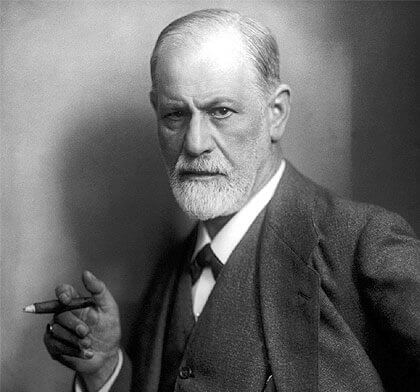Sigmund Freud, known worldwide as the father of psychoanalysis, is one of the most influential and controversial figures of the 20th century, largely due to the fact that he created a completely new approach to understanding the human personality.
Freud’s theories were the basis of a school of psychology that sought to understand human spirit and behavior. The publication in 1899 of his book “The Interpretation of Dreams” laid the foundation for the theories and ideas that formed psychoanalysis.
- However.
- Although he is one of the best known characters of our time.
- There are many curious things about him that we are sure you do not know about.
- So let’s dive into some of the most curious facts of this physiologist.
- Doctor.
- Psychologist and thinker who changed the way we see the mind.
Freud was born on 6 May 1856 in Freiberg, Moravia (now Prbor in the Czech Republic). His father Jakob, 41, who was a wool merchant, had two children from a previous marriage. Her mother Amelia was twenty years younger than her. The failure of his father’s business forced the family to move to Vienna.
Freud’s parents had seven other children. However, Freud often describes himself as his mother’s favorite, which may be relevant to his own thinking. Indeed, on one occasion Freud himself suggested: “I have found that people who know that they are preferred or favored in one way or another by their mother are self-reliant and have an unshakable optimism that is often responsible for their success. “
Before its harmful effects were discovered, cocaine was used as an analgesic and to improve mood (thanks to its ability to cause euphoria), and has also been used in the formulation of common household products, soft drinks and throat pills. the possible antidepressant effects of cocaine and advocated its use for various purposes.
In fact, Freud’s addiction to cocaine came to help a good friend, Dr. Ernst von Fleischl-Marxow, addicted to morphine to relieve the pain he suffered after cutting himself with a scalpel while dissecting a corpse. serious problems.
At the time, cocaine was considered a panacea for all kinds of pain, a condition that motivated Freud to initiate his research with cocaine as an antidote to his friend’s morphine addiction, however, the results have been shattered. When the harmful effects of cocaine were known, Freud’s medical reputation was affected and he was already addicted.
At the age of 26, Freud fell in love with a 21-year-old woman named Martha Bernays, with whom he began dating two months after meeting, but was a poor student still living with his parents and his work in a scientific lab could not support a family.
Six months after meeting Martha, he gave up his scientific career to become a doctor. He studied for three years at the Vienna General Hospital and rarely saw his girlfriend, who had moved to Germany. After four years of waiting, Freud and his girlfriend married and had six children. Some historians say he had an affair with his sister-in-law Minna.
Although Freud’s theories are often criticized or rejected by today’s psychotherapists, many continue to use the methods of the famous psychoanalyst as the basis of his therapies. Psychoanalytic therapy, also known as ‘conversation therapy’, plays a key role in therapies for today’s analysts and analysts. has become an important part of many therapeutic techniques.
The use of conversational therapy attempts to highlight significant mental patterns or events that can play an important role in the patient’s difficulties. Psychoanalysts believe that childhood events, unconscious feelings, thoughts and motivations play an important role in mental illness and inappropriate behaviors.
When the Nazis invaded Austria, many of his books were burned along with other books by famous thinkers. Your opinion on this subject is a little curious. They say that on one occasion Freud told a friend, “We are moving forward. In the Middle Ages they would have burned me alive, are you happy today to burn my books?.
Freud and his daughter Anna were questioned by the Gestapo and, thanks to their friend Marie Bonaparte, was able to guarantee their trip to England. Bonaparte also tried to save Freud’s four young sisters, but failed. All four women died in Nazi concentration camps. .

